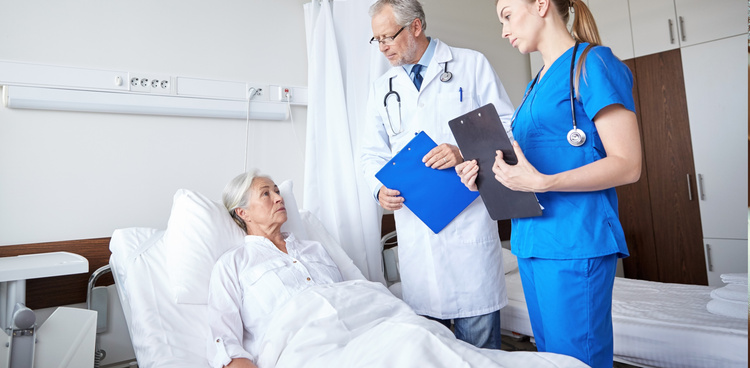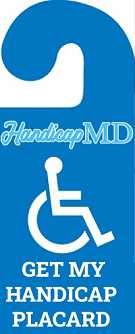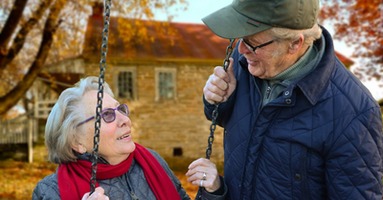
How Handicap Parking Placards Can Help Patients with Bedsores
How Handicap Parking Placards Can Help Patients with Bedsores - Bedsores are injuries to the skin that occur due to prolonged pressure to the skin. They are also known as pressure ulcers and usually happen on the skin covering bony sections of the body such as hips, ankles, tailbone, and heels.
The people at the highest risk of developing bedsores are those with medical conditions that inhibit their ability to change positions or confine them to a bed or chair for a long time. They can develop within hours or even days.
Some bedsores can be healed, given the proper treatment, but others are permanent and never completely healed. For this reason, it is much better to prevent bedsores before they can develop and ensure that they have the right conditions for healing.
Symptoms of Bed Sores
- Strange changes in skin texture and color
- Swells
- Pus-like draining
- Patches of skin that might be colder or warmer than the rest of the body.
- Tender areas
Depending on the sores' depth, severity, and other characteristics, several stages determine how worse the sores have progressed. The degree of tissue damage can also vary from red, unbroken skin to severe injuries extending to the bones and muscles.
Typical Sites of Bed Sores
For wheelchair users, pressure ulcers usually take place on the skin in the following areas:-
- Buttocks or tailbone
- Spine and shoulder blade
- The back of legs and arms where they usually rest against the chair
For people that are confined to their beds, bedsores may happen on:-
- The sides and back of the head
- Spine
- Hip
- Lower back
- Heels
- Ankles
- Behind the knees
When should you see a doctor?
Suppose you happen to notice any signs of pressure ulcers in the areas that have been mentioned above. In that case, it is imperative that you immediately change your position to relieve pressure on these areas. If there are no improvements in one or two days, reach out to your doctor.
You should also seek treatment whenever you notice other signs of infections like drainage from a sore, fever, and foul smell emanating from a sore. Increased redness and warmth from the sore is also another sign that it is getting worse, and as such, you should consult a doctor for the best medication.
Causes of Bed Sores
Bedsores are usually a result of pressure against the skin. This pressure is the cause for limited blood flow to the skin, which then causes the skin to be more prone to damage, and as such, it becomes easier for bed sores to start developing. The main factors that contribute to bedsores include:-
- Pressure: Any prolonged pressure on your body can reduce the flow of blood to the tissues. Blood is required to deliver oxygen and other nutrients to tissues, and whenever these nutrients are lacking, the skin will incur damage and eventually die. The pressure affects people with limited mobility, especially in places not padded with fat or muscles. The sections of the skin that are over a bone are more likely to develop these sores.
- Friction: Whenever the skin rubs against bedding, friction happens, which can cause the already fragile skin to become more vulnerable to injury. This is also the case when the skin of moist as the friction causes more skin damage.
- Shear: This is what happens whenever two surfaces are moving in opposing directions. For instance, an elevated bed can cause you to slide down, and as you move, your skin remains in the same place, causing strain and stretching it out. This might also cause sores to start developing due to the stress on the skin.
Risk Factors
You might be at a higher risk of developing pressure ulcers if you have trouble moving and cannot easily adjust your position whenever you are in bed. Some of the risk factors for bedsores include:-
- Immobility
- Incontinence: Whenever you have extended exposure to stool and urine, the skin will be more likely to develop sores.
- Lack of sensory perception caused by neurological disorders and spinal cord injuries.
- Poor nutrition and hydration causes the skin to be unhealthy
- Medical conditions that are known to affect the flow of blood also increase the risk of tissue damage
Complications
Some of the complications that develop as a result of bedsores include:-
- Cellulitis: An infection of the skin and soft tissue
- Bone and joint infections: pressure sore infections can extend to the bones and joints
- Cancer: Wounds that do not heal can develop into a type of cancer
- Sepsis
Prevention
It is possible to prevent the development of bedsores by frequently changing your position in bed to avoid stressing your skin. You can also ensure that you have proper nutrition and fluid intake, quit smoking, exercise daily and take appropriate care of your skin.
Useful Tips for Repositioning
When in a bed or chair, you must regularly shift your weight. You can also ask someone to help you change position once every hour. You can also try to lift yourself and do several wheelchair push-ups.
Additionally, you can get yourself a specialty wheelchair that enables you to tilt, and as such, you will be able to relieve pressure. Also, get cushions and mattresses that are capable of reducing pressure. Make changes to the elevation of your bed to avoid shearing when you slide downwards in a steeply elevated bed.
Tips for Skin Care
Following are some valuable tips for taking care of your skin to prevent bedsores.
- Always ensure that you keep your skin dry and clean. Please use a gentle cleanser to wash your skin and pat it dry. The cleaning should be done regularly to limit urine, stool, and moisture exposure.
- Protect the skin by using barrier creams. If necessary, change clothing and bedding frequently.
- Inspect your skin regularly to ensure that you can catch early symptoms of pressure sores and get treatment in time.
If you or your loved one needs a handicap parking placard - get started below
.png)






